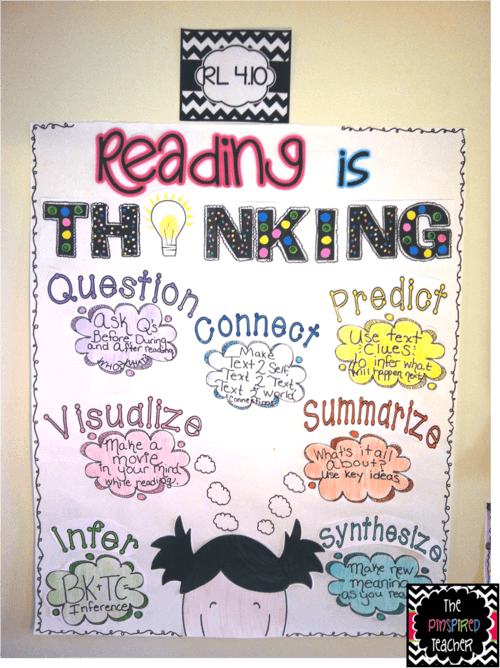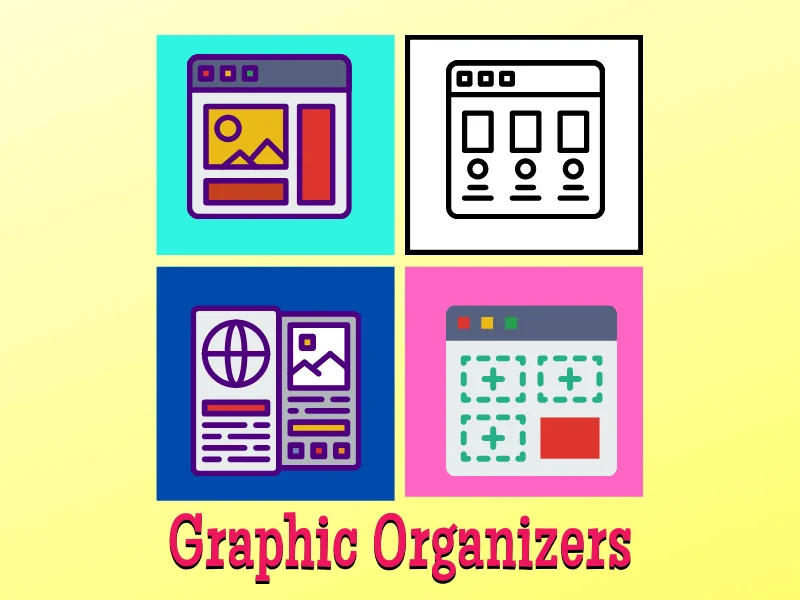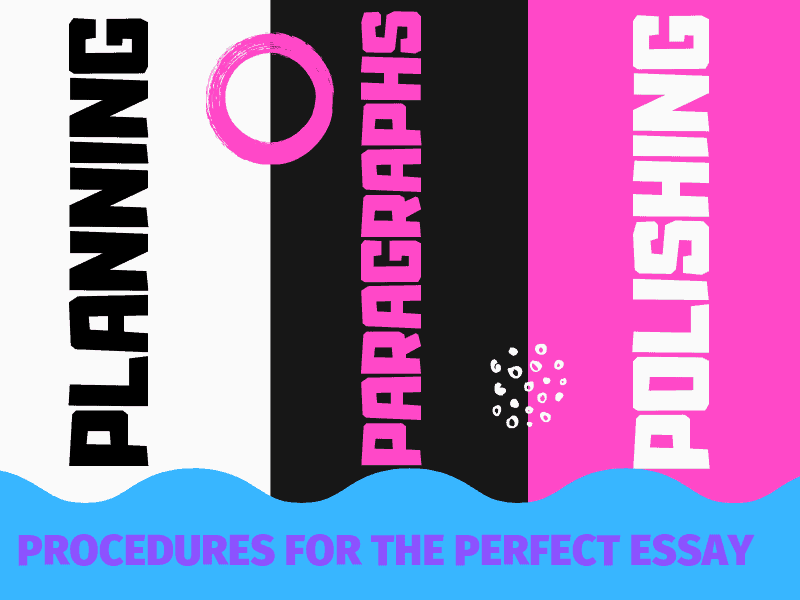
WHAT ARE ANCHOR CHARTS?

Anchor charts are tools that support learning in the classroom. They can be used to support everything from classroom management strategies to the teaching of writing.
Essentially, they are visual prompts that provide students with information regarding their prior learning on a given topic. These visual prompts are used to provide a scaffold to support the students during guided practice and independent work.
WHAT ARE THE BENEFITS OF ANCHOR CHARTS FOR WRITING AND READING?
Anchor charts are becoming increasingly popular in classrooms for some very good reasons. They offer a wealth of benefits for students and teachers alike.
Here are just a few of the great benefits of using anchor charts as writing tools in the classroom.
Anchor Charts Provide Increased Student Engagement
Anchor charts are an effective way of encouraging student engagement. Not only do they increase student confidence when engaged in a writing task, but they help to keep students on task by offering support in the form of visual prompts that help unstick the stuck! These anchor chart examples below provide students with a great visual point of reference to learn from.

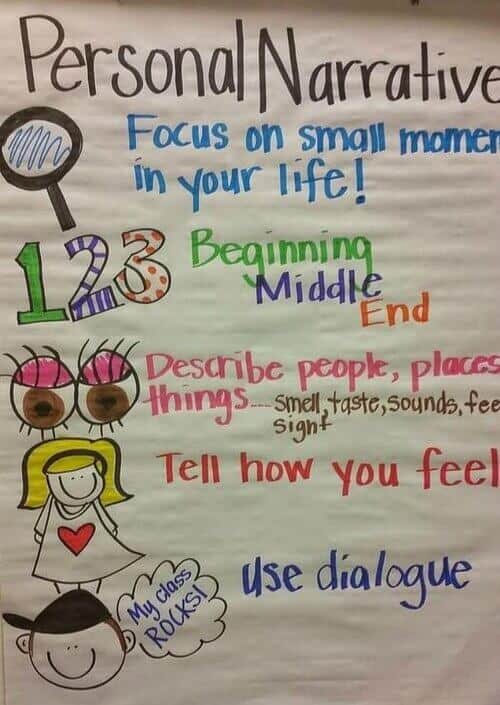
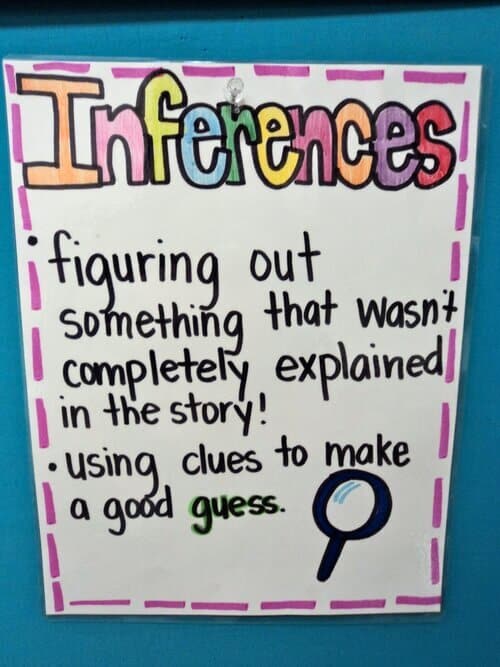
101 DIGITAL & PRINT GRAPHIC ORGANIZERS FOR ALL CURRICULUM AREAS
Introduce your students to 21st-century learning with this GROWING BUNDLE OF 101 EDITABLE & PRINTABLE GRAPHIC ORGANIZERS. ✌NO PREP REQUIRED!!!✌ Go paperless, and let your students express their knowledge and creativity through the power of technology and collaboration inside and outside the classroom with ease.
Whilst you don’t have to have a 1:1 or BYOD classroom to benefit from this bundle, it has been purpose-built to deliver through platforms such as ✔ GOOGLE CLASSROOM, ✔ OFFICE 365, ✔ or any CLOUD-BASED LEARNING PLATFORM.
Anchor Charts Deepen Comprehension
Often, students get involved in the actual production of the anchor charts themselves. When helping to produce the anchor charts, students will have opportunities to reconstruct their learning and thereby deepen their comprehension of the material in the process.
As they construct their charts, students begin to make new connections between the various aspects of their learning as they organize these aspects in a visually comprehensible manner.
Anchor Charts Supports Independent Work
Learning to write well can be one of the most challenging things a student learns to do at school.
As students learn to navigate the demands of various writing genres, seemingly endless questions arise at word, sentence, and whole text level.
This, in turn, makes heavy demands on the teacher’s time as individual students struggle with the various challenges of a given task.
Fortunately, anchor charts can help alleviate some of that burden by providing a visual resource and reference point that help students to answer many of the more commonly asked questions for themselves. This frees up the teacher from having to repeatedly answer the same questions throughout the course of a lesson, making more time to offer support where it’s most needed.
WHAT DO ANCHOR CHARTS LOOK LIKE?
Anchor charts come in all shapes and sizes and can be commercially bought or produced collaboratively by students and teachers in class.
Commercially bought Anchor Charts are great for permanent displays within the classroom.
Usually well-presented in bold lettering using dynamic colors, professionally-produced charts work well for topics that recur throughout the course of the year and are complex enough to require ongoing reinforcement.
When anchor charts are self-produced, they are usually handwritten in large print and displayed in a prominent position in the classroom for easy reference.
Usually, a co-creation between the student and the teacher, the charts should contain only the essential information regarding the topic.
When deciding what to include on a chart, think about the concepts, strategies, and prior learning that will most help students to work independently when engaged in their work.
HOW ARE ANCHOR CHARTS CREATED IN THE CLASSROOM?
To produce an anchor chart in the classroom requires very little in the way of resources other than some chart paper and some colored markers. Other than these, and defining a clear purpose and focus for your anchor chart, there is no specific preparation required.
However, there are a number of common elements to consider when producing anchor charts for use in the classroom. Some of these include:
● Paper: Decide whether you are using adhesive paper, lined paper, blank paper, colored paper etc
● Font-Size: This should be large enough to see from the various working areas of the classroom
● Collaboration: Is it teacher-produced or a collaboration? What is the level of student involvement?
Where Anchor Charts are to be co-created with students, generally, they will be produced in collaboration with the students as you teach the lesson.
The chart will include the most important content and relevant strategies. In the case of the various writing genres, a list of the main criteria that must be included works well.
The anchor charts can then be used by the students as a checklist to refer to as the writing is produced. They can also serve for a final check when the work has been completed.
Here are some general tips to help ensure you get the most out of Anchor Charts in your classroom:
● Keep things simple
● Be sure the writing is well organised and easy to read
● Use headings and bullet points to help display the main points
● Use different colors for headings, bullet points etc
● Use simple pictures, graphs, illustrations etc to help reinforce points
● Don’t fill with lots of distracting details or graphics
Anchor Charts as Writing Tools – Examples
Anchor charts can be used very effectively to break down many of the more complex aspects of writing.
From punctuation use to the specific criteria for various writing genres, Anchor charts are a fantastic way to visually reinforce student understanding of these diverse processes.
The content of each chart will be dependent on their focus. But, let’s look at the possible content of two examples of Anchor Charts to help serve as models for what might be contained in an anchor chart produced in your classroom.
1. Point of View Anchor Chart
The Point of View Anchor Chart can be used both to help guide students in identifying the point of view in a text as well as to help in the creation of the student’s own texts. We have an excellent guide on point of view that can be found here.
Looking out for keywords is an effective way to determine the point of view in a piece of writing. Point-of-view keywords are generally centred around the pronouns and the level of insight and perspective we are offered.
Let’s look at some of the more common points of view used, first in a little detail and then at how they might appear on an Anchor Chart.
First Person – a character is telling the story (narrator), and we often gain insight into the characters’ thoughts. Clues that indicate a first person will be the use of pronouns such as I, my, me, mine, we, us etc.
As bullet points, this might look like this:
● First Person
○ Character narrates the story
○ Narrator is in the story
○ Narrator’s thoughts are revealed
○ Uses pronouns: I, my, me, mine, we, us etc.
Third Person Limited – the narrator is outside the story and telling the story. In third-person limited, the writer sticks closely to the point of view of a single character, so we are usually only privy to that one character’s thoughts and experiences. The narrator does not know everything about the events that occur in the story. Indications that the third person is being used may be the use of characters’ names and pronouns, such as he, him, his, himself, she, her, hers, herself, it, its, itself, they, them, their, theirs, and themselves.
In brief:
● Third Person Limited
○ Narrator is outside the story
○ Narrator tells the story primarily from one character’s POV
○ Only the main character’s thoughts and feelings are revealed
○ Narrator has limited knowledge of events
○ Uses pronouns: he, him, his, himself, she, her, hers, herself, it, its, itself, they, them, their, theirs, and themselves.
Third Person Omniscient – the narrator tells the story and is privy to everything. Not only all the details of every event in the story, but the interior life of each character, such as emotions, opinions, and feelings, whether expressed or not. The usual third-person pronouns are used along with the character names.
In brief:
● Third Person Omniscient
○ Narrator tells the story from ‘above.’
○ Narrator knows the thoughts and feelings of every character
○ Narrator knows everything that happens
○ Uses pronouns: he, him, his, himself, she, her, hers, herself, it, its, itself, they, them, their, theirs, and themselves.
2. Instructional Writing Anchor Chart
The criteria for writing clear instructions can be very handily displayed as an anchor chart.
When writing a set of instructions, students can refer to the chart to help organize their writing. The same chart will also serve as a checklist for self-assessment at the end.
An instructional writing anchor chart may include information such as:
Instructional Writing:
● Includes an explanatory title, e.g. ‘How to…’
● Laid out in bullet points or numbered instructions
● Uses time connectives to organise, e.g. ‘first’, ‘then’, ‘finally’ etc.
● Uses imperatives to instruct the reader
● Use straightforward, functional language
● Supported by illustrations or diagrams
● Diagrams and illustrations contain captions
In Conclusion
As we can see, anchor charts can serve as useful writing tools that support the development of student writing skills in the classroom.
When displayed prominently in the classroom, they can help students efficiently bridge the gap between being emergent writers lacking in self-confidence to becoming self-assured, independent writers.
It is important to remember, too, that though anchor charts are great tools that support students, ultimately, the intent is for the students to internalize the knowledge and information they contain. So don’t allow them to become a permanent crutch!



